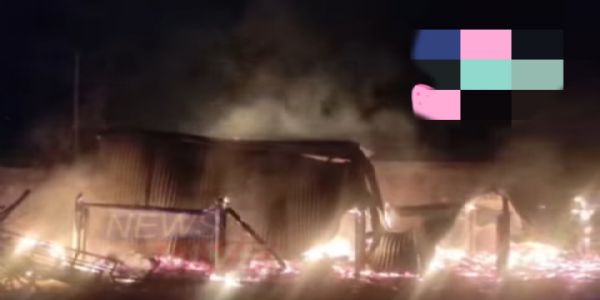
Bengaluru, 02 April (HS): The people of Karnataka are reeling under a series of burning problems to no avail but none of the contesting parties or their representatives seems to be perturbed over the alarming predicament. Interestingly even the voters or the general public appear to be least perplexed over the serious development adversely affecting their normal life and livelihood.
Not a subject for discussion: But for a few letters in the Letters to the Editor columns of some regional language newspapers anyone going through their online editions sitting elsewhere across the globe is bound to form an opinion that everything is well in their home state. However, the situation on the ground is quite paradoxical and worrisome.
Soaring mercury…: March 2024 remained exceptionally dry in the whole of the state while Mercury roared to 36.6 degrees centigrade dubbed to be the highest since 2019 and none of the 16 India Metrological Department (IMD) observatories in South Karnataka recorded any rainfall. According to the IMD sources, a trace of rain is defined as minimal but of measurable amount specifically 0.01 cm to 0.49 cm.
KRS Dam records a five-year low: Although the state witnessed consecutive years of surplus rain and the monsoon failed in the year it was the worst situation this year. The Krishna Raj Sagar (KRS) Dam in Mandya district has hit a five-year low. The water level of KRS Dam on Tuesday was 87.02 feet while that of the Mettur Dam in Tamil Nadu was 59.73 feet. The total capacity of KRS is 124 feet and that of Mettur is 120 feet. Mettur Dam receives water from Kabini Dam and Krishna Raj Sagar Dam located in Karnataka.
Drinking water woes: Thanks to the water levels dipping in the Dams of the state the supply position of drinking water from the civic bodies and agencies has gone haywire. According to the Rural Drinking Water and Sanitation Department, Government of Karnataka, the state is the second most drought-prone region in India after Rajasthan. The state receives erratic rainfall unevenly distributed and two-thirds of the geographical area receives less than 750 mm of rainfall. Although the average annual rainfall is around 1,138 mm received in 55 days, it varies from as low as 569 mm in the east to as high as 4,029 mm in the west. For record sake, the state has seven major river basins with the availability of 3,475 TMC of water, of which only 1,690.30 TMC, in other words only 50 per cent is utilized for developmental purposes. At the same time, the demand for water consumption is ever-growing due to rapid urbanization, unplanned and illegal growth, depletion and degradation of water resources in the form of encroachment of water beds and sand mining.
Already 64 per cent used: The Department laments- “Groundwater is the major source of drinking water. However, due to the depletion of groundwater and draining of rivers, the population is now struggling to meet its drinking water needs. The total replenishable groundwater potential of the state is estimated at 17.03 Billion Cubic Meters (BCM) received during the monsoon and non-monsoon seasons. But, the state has already over-drafted groundwater by 64 per cent and only 6.53 BCM is available for future use.”
Farmers protest in Belagavi: Representatives of several farmers’ organizations staged a protest before the district administrative headquarters of Belagavi on Tuesday. They were demanding drought relief, a supply of drinking water and fodder to the cattle. By and large, the situation is the same across the state but, it looks like the peasant community has lost its charm even in fighting for such grave issues elsewhere.
Hindusthan Samachar/Manohar Yadavatti





